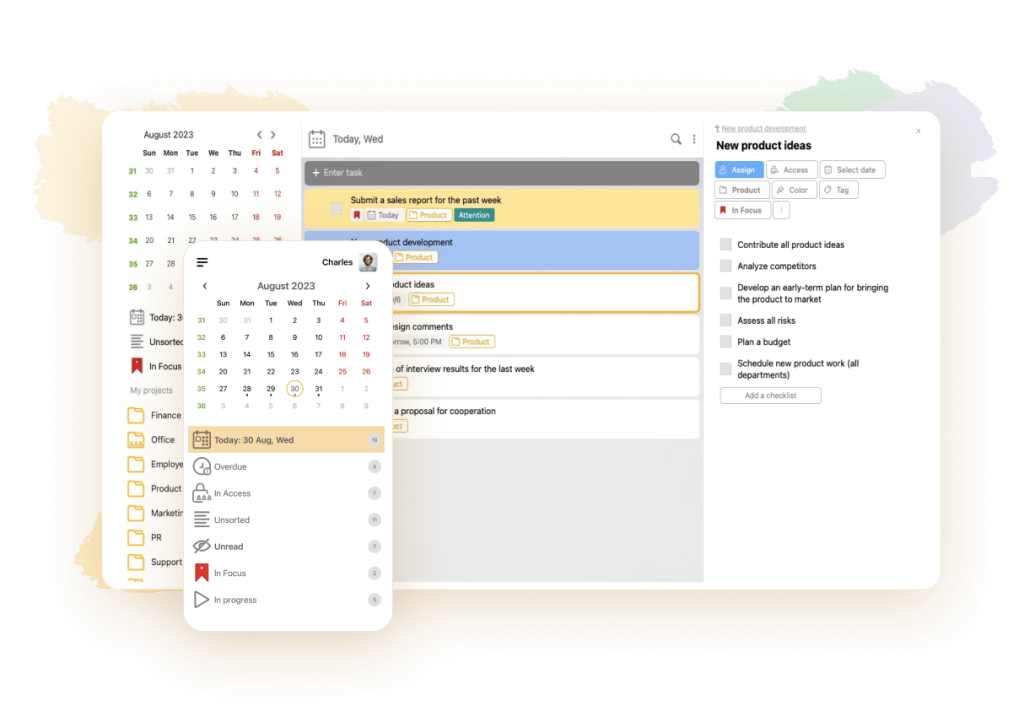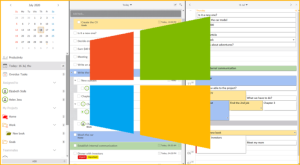Project team management

The most important competence of any project manager is the approach in managing the work team. It includes not only controlling and tasking subordinates, but also many other tasks. For example, empowering and inspiring staff, demonstrating active leadership, and managing conflicts.
The peculiarities of team management determine its efficiency, potential, speed and quality of communications within the project being implemented. At the same time, not every person is capable of managing people. It is quite a difficult task, and skill comes with experience. Therefore, before managing a project, any manager is recommended to understand in advance the specifics and formation of effective management, its types and methods, to use its practices, and to form their own management style.
Definition of the concept
According to Pbmok (Project Management Body Of Knowledge), project team management is the ability of a manager to coordinate the actions of all project participants in a working group bound by a single project to accomplish certain strategic objectives.
It encompasses a set of key abilities including conducting corporate communication, positively influencing team performance, setting goals and objectives, evaluating human resource performance, identifying problems, dividing a project into phases – parts of the project life cycle, resolving conflicts, monitoring and managing assignments, schedules and workload.
Nuances of team management
The team under the guidance of a competent manager is the engine of the project, without it it is impossible to fulfill all the set tasks and successfully implement the project. With careful coordination, knowledge of strategies, and proper management of the work team, other non-obvious advantages of management emerge:
- Productivity. Emerges by balancing staff workload, creating realistic deadlines, supporting and removing barriers that directly impede task completion.
- Сapacity. Emerges from a strong corporate base and highly motivated employees.
- Learning. It is the result of teamwork, experience and skills of the team and its head, quick adaptation.
- Cohesion. Originates from the active cooperation of the team.
- Morale. Born from happy and efficient employees who are easier to retain, minimizing attrition and saving the company money.
Thus, successful management of a project team carries a huge number of specific advantages. Therefore, the administration of any firm should be interested in the effective development of this area.
Project team composition
The working group managed during project creation is a well-coordinated team with participants of different levels. There are usually three groups of employees depending on their involvement in the process:
- core team – specialists who are directly involved in the implementation and maintenance of the project and are in constant contact with each other;
- extended team – employees who assist the core team but are not directly involved in the project;
- stakeholders – people who do not cooperate with team members, but can influence them in the process of project activities.
Among the project participants it is common to distinguish the customer, project initiator, supervisor, project manager, investors, contractors, subcontractors, suppliers, authorities and end users. The project manager – the person responsible for the execution, speed and quality of the entire project – deserves the most attention.
It is recommended to avoid destructive characters on the team that can ruin the creation and progress of any project. These include:
- aggressors – employees who are hostile to the project and position themselves against it in every way possible;
- blockers – participants who paralyze the team’s ability to brainstorm, discuss ideas and concepts put forward;
- disengaged – members of the work group who do not participate in any aspect of the work, preferring to sit in the shadows;
- erratic – subordinates jumping from one topic to another and not allowing any issue to be resolved;
- dominant – employees who aggressively impose their opinions;
- “glory hunters” – employees interested only in personal gain.
When forming a project team, you should strive to recruit people who are active initiators, motivate other participants, easily collect and share information with others, raise the mood of the team, inspire colleagues, and help bring together all the data collected.

Signs of a project team
The working group for the creation of a project is assembled for a short period of time and is a non-permanent, temporary part of the company. It is only needed for the management period until a project is realized and launched. However, it has its own specific functions, responsibilities, structure and form. The upper level of the project team consists of the project manager, the lower level consists of specialized executives with certain discipline-specific knowledge, skills and abilities.
The leader, or project manager, must independently determine the number of members of the working group, select participants with qualifications that would meet a number of requirements. He should also take into account that the composition of the future team should be correctly correlated with the goals, objectives, requirements of the project. Selection of participants for the team should be carried out in accordance with the general psychological profile, so that employees do not conflict and work as efficiently as possible. The internal culture of the project should encourage the staff to work and achieve the highest results.
The key attributes of a project team are considered to be:
- internal structuring (management, sanctioning and control bodies);
- common goals, objectives and super values;
- isolation (distinguishing one project group from another);
- Team pressure (mutual influence of participants on shared behavior);
- a tendency toward stability.
If all the attributes are met, the existing working group can be called a team.
Planning and organization of team work on the project
Planning of the labor activity of the working team should be carried out even before the financial resources are injected into the project. For this purpose, it is recommended to timely select the quantitative and qualitative composition of the team, the executive manager, their roles and the actions of each department. Then the work of employees will be maximized, and resources will be distributed correctly – in accordance with the designated project and its plan.
When assigning responsibilities, assigning functions to each employee, the following points should be taken into account:
- professional qualities of team members;
- personality traits of current employees;
- understanding by each participant of the group of the goals and objectives set for him/her, the assigned role and responsibilities in the team;
- positive attitude of all selected subordinates, their belief in the success of the development.
The manager should also realize that each employee is an individual who may or may not understand the responsibilities assigned to him or her. Therefore, at the stage of introduction to the project activity, for the qualitative organization of teamwork it is necessary to create a manual and give it to all project participants. The document should be small, easy to understand and take into account all the details and basics of future activities.
In addition, it is recommended that records be kept during the process to record progress, create schedules, and assign areas of responsibility.

Types of project team management
It is no secret that each working group develops its own organizational culture that is different from others. It corresponds to special forms and unique management principles of each individual project manager. These types of project team management are defined depending on the form of making and the way of realization of management decisions.
Among them, basic variants very similar to culture types stand out:
- authoritarian style – provides for sole and unappealing decision-making by the project team leader; it is appropriate for projects involving unlimited human resources with low qualifications and low professional level;
- entrepreneurial (organizational) style – assumes motivation by monetary rewards, well reveals the potential of projects related to the introduction of new products on the market;
- bureaucratic style – focused on regulations, orders and penalties, successfully applied to the implementation of budget management systems and description of business processes;
- democratic style – establishes rules jointly developed by the team, considers the working group as a professional community aimed at achieving results and personal development, is among the most common options for managing the project team;
- dialog style – involves the use of knowledge of participants as the main management factor, distributes the functions of the manager between several subjects, is suitable only in case of high activity, flexible team structure and equality of these participants.
It cannot be said that any particular style is the most successful. The choice should be made depending on the level of training and professionalism of the team, its cohesion, the number of projects already completed before and many other factors.
Methods and tools of project team management
The manager should use additional project team management tools as aids. There are five main methods that can establish, optimize and improve the work of the team. Let’s highlight and consider them in more detail.
Observation and discussion
An informal method used to learn about the progress, successes and failures, difficulties and mood of staff through communication with team members.
Evaluation of work efficiency
The essence of this technology – direct meetings and meetings of the working group participants with the project manager to organize the receipt of evaluation by the executors, to determine their activities. During the conversation, problems are also identified, responsibilities of employees are clarified, and goals for the near future are created and defined.
Problem Log
The main task of the project manager is to solve problems that threaten the successful implementation of the project. In case the difficulty cannot be resolved informally, it is recommended to record the operation in a special logbook. In it, in addition to the essence of the problem or case, the specific people responsible for its solution should be indicated, as well as the deadline for completing the task.
Interpersonal communication
Interpersonal skills for managing and developing the project team are needed to motivate the team, maintain good relationships, and be able to achieve better results during the project. For example, the core competencies are:
- leadership – allows you to choose the right direction of work, convince people to follow you, inspire, motivate;
- influence – helps build trust, listen, compel;
- Effective decision making – involves having excellent intuition or reliable information to make the most efficient and productive decisions.
Conflict resolution
Misunderstandings, disagreements, and conflicts arise not only between employees, but also between supervisors and managers. They strongly affect the progress of the project, so it is very important to regulate them quickly and constructively, without letting the overall mood of the team be spoiled. This is why a project manager needs to be aware of the basic methods of conflict resolution. These include:
- problem solving – calmly resolving the difficulty by the project manager without confrontation with a team member;
- collaboration – helping you make a decision;
- compromise – the path of concession and consensus for the common good;
- coercion is not the best method for peaceful and long-term problem solving, as it does not solve the initial disagreement, undermines the authority of the project manager, and worsens the mood of the team;
- smoothing – a method that minimizes, but does not eliminate, the resulting contradictions;
- evasion is the worst remedy, as it does not allow to settle the conflict at all, to resolve difficulties in communication between people.
The use of these project team management techniques helps the manager to become an effective project manager who leads his subordinates to successful activities. In addition, modern tools, such as online project team management platforms, can also help.
LeaderTask – a system for project team management

LeaderTask, a convenient manager for teamwork, greatly simplifies the joint work of the labor team on the project, increases the speed, efficiency and quality of activity. The manager has the opportunity to unite employees on a single platform, where it is easy to control people’s activities, monitor progress at all stages, statistics and perform analysis of the led project even in a remote format.
The online service allows staff to share information at any time, discuss ideas together, delegate tasks, set and assign tasks to each other. In addition, the program distributes roles, assigns observers. Each subordinate sees only his/her area of responsibility and performs the required work with those tasks, presentations and projects that need his/her direct involvement. The program is well suited for managing projects according to various methodologies, such as Agile, Scrum or the wheel of team management, whose author is Charles Margherison.
Rates:
- beginners (free – 0 $);
- for professionals (premium – from 3.33 $ per month only for 1 user);
- for teams (business – from 4.66 $ per month for 1 user);
There is a free test period for paid tariffs.
Thus, we have found out that successful project team management is not an easy activity. Therefore, it should be planned and organized much earlier, even before the working group is created. The most attention should be paid to the selection of the team and the involvement of participants in the process. However, the selected types and styles of leadership of the manager, methods and means of management also play an important role.
Special electronic assistants, such as the LeaderTask online service – a platform for managing a project team – are also invaluable in project creation. With such a tool, it is much easier for the manager to control the activities of the working group, stay in touch, distribute assignments, and track progress.
Use the proposed tips, apply the recommendations. And the successful creation of the project will remain a matter of time! Good luck!


